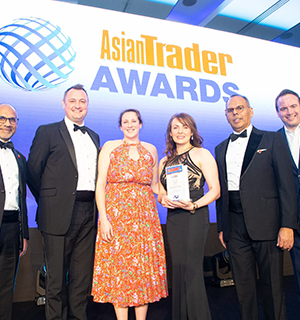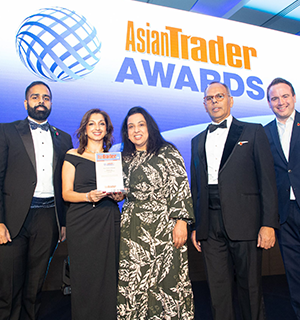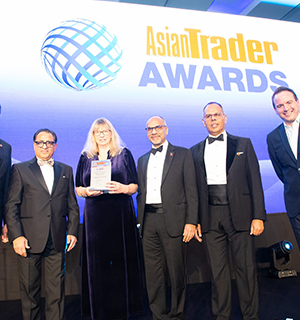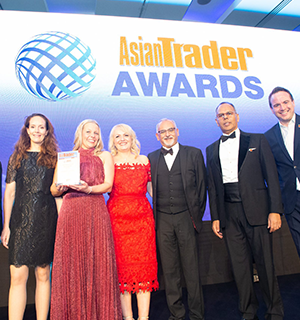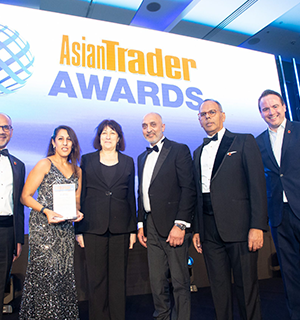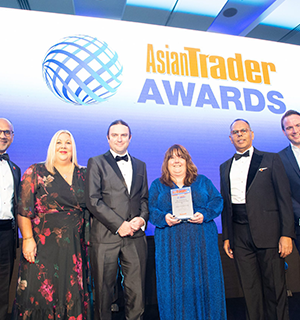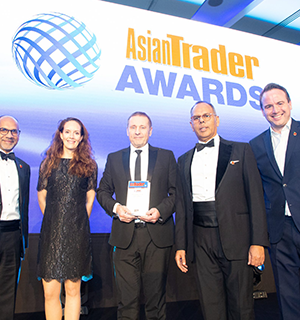There is a huge competitive advantage in handing food to customers instantly, reliably, and affordably during inflationary times. Hence, the opportunities for growth in “food-and-beverages to go” (FTG) category is endless if their FTG offer is calibrated correctly.
However, retailers should note that the importance of healthy and natural products is gaining ever more importance in shoppers’ eyes. Customers are increasingly switching to products such as natural drinks, meal replacements and vegan foods, which promise health benefits and come from sustainable sources.The UK’s food and beverage (F&B) industry, which is showing remarkable signs of recovery after a challenging year, is poised to reach the highest level of its outlet growth since the pandemic, reveals Lumina Intelligence’s Food to Go Report 2023
The return of workers to offices have led to a two per cent year-on-year increase in penetration, indicating that consumers are participating more in the market.
“People are settling down to going to offices full time or flexi working, presenting growing opportunities for retailers to sell food and hot drinks to go,” said Josh Corrigan, customer development director, UK, at St Pierre Groupe. “Morning goods complement hot drinks perfectly and are a great opportunity for retailers to increase basket spend.”
Retailers must deploy a combination of traditional and innovative marketing and distribution approaches to successfully position products to deliver long-lasting and profitable growth.
Grab-and-go concept

Today, independent retail stores are seen not only as places where people can purchase ingredients and essentials, but increasingly where they can get prepared food.
The grab-and-go concept, which is easily adaptable to different types of meals, helped retailers in a big way to meet their business targets during Covid-19 slowdown. Even after the pandemic, the concept continues to remain popular, and all data underlines that the sector will witness tremendous growth.
“The Covid-19 phase came as a boon for the industry,” says an independent retailer from Bristol. “The pandemic paved way for retailers to adapt and adjust to maintain their profit margin from rising overhead expenses. The concept of ‘grab-and-go’ became so popular and successful among us during the period, offering people with ready-to-eat food at any time during the day or night.”
“Changing lifestyles and an ever-increasing desire for convenience and choice have all played a significant role in the way we consume food,” says Samantha Winsor, marketing manager, Lantmännen Unibake UK. “Today more than ever before consumers are looking to the grab-and-go category as a solution to their meal and snack needs. The category is growing at double the rate compared to other food channels, providing a huge opportunity for outlets looking to expand their offering.”
However, to deploy the grab-and-go concept successfully in stores, retailers must install the right equipment, while making it as easy as possible for buyers to see what they want – to select, pay quickly, and carry on with their day.
Expanding food basket
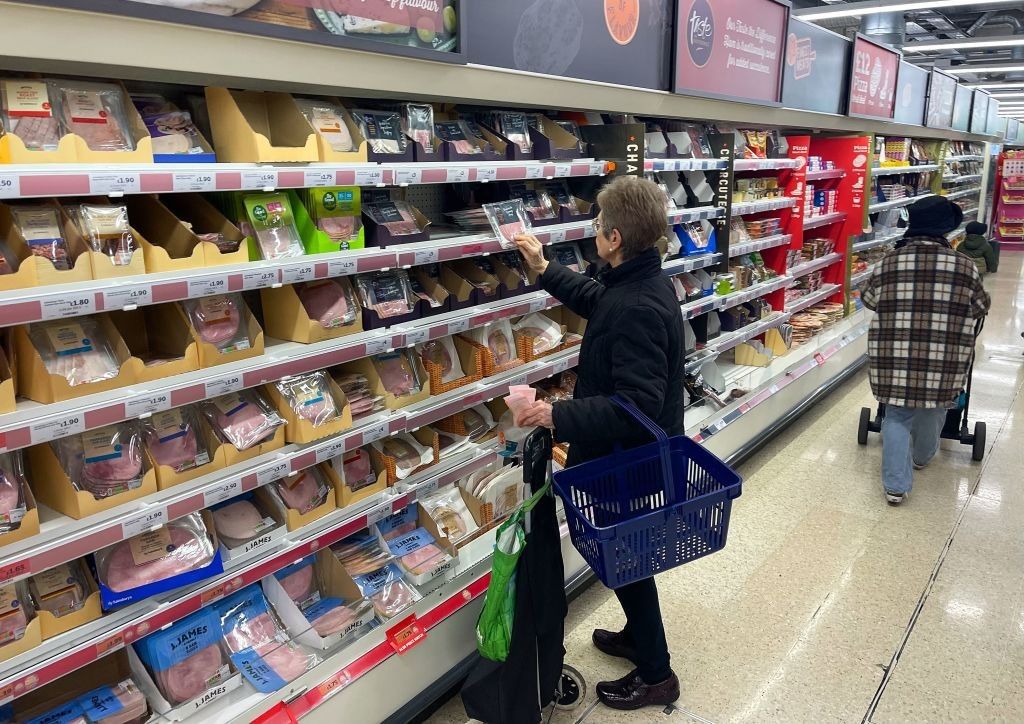
Amid a slow recovery in passenger volumes and high street footfall, the UK food-to-go market rose 31.7 per cent to an estimated value of £21.4 billion in 2022, just +0.9 per cent shy of its 2019 total, shows Lumina Intelligence’s Food to Go Report 2023.
The food-to-go market is forecasted to arrive at a value of £22.2 billion in 2023, with a growth rate of +4.1 per cent. The key drivers of growth, according to Lumina Intelligence, are high inflation and a recovery in footfall.
Leading brands like St Pierre, Fox’s Burton’s Companies (FBC) UK, Premier Foods, Tayto Group, Lantmännen Unibake UK, etc are vying hard for a larger share from the UK’s growing food basket offering a variety of go-and-grab food items for the discerning customers.
The arrival of new healthy and natural foods has created vibrant and fast-paced categories within the grab-and-go aisle, offering tremendous opportunity for the development and growth food and beverages items.
Breakfast time
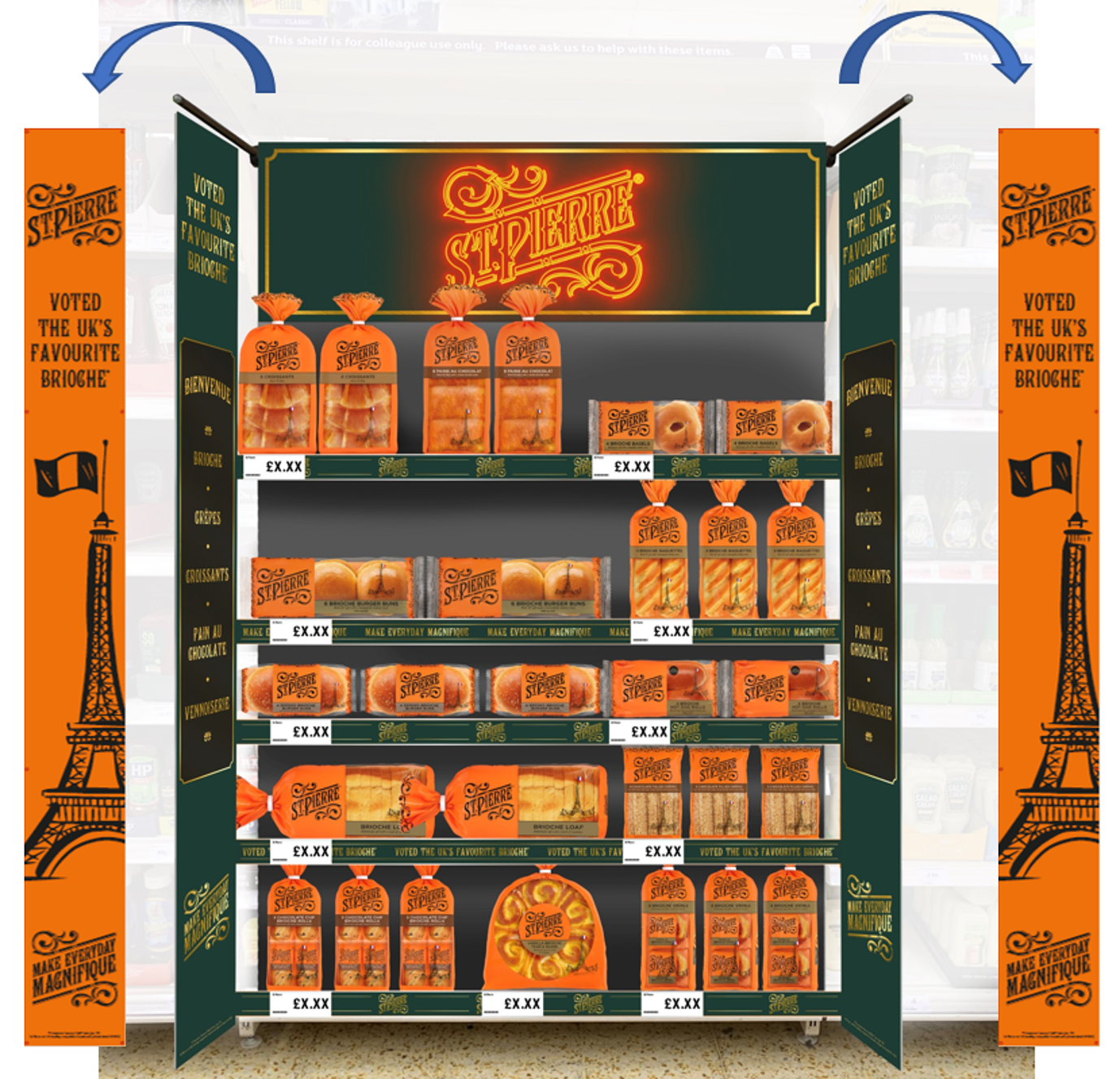
French-inspired international bakery firm St Pierre Groupe launched individually-wrapped morning goods ranges in SRP (shelf-ready packaging) formats in April 2020, catering to retailers looking to capitalise on the ‘on-the-go’ crowd.
“The morning run presents a clear opportunity for retailers to merchandise a range of morning goods near the hot drinks dispenser,” adds Josh Corrigan, customer development director, UK at St Pierre Groupe. “It is an opportunity for retailers to use the strength of the St Pierre brand to draw shoppers back to the store on repeat visits.”
St Pierre’s morning goods value sales for the last 12 weeks are 12 per cent ahead on the previous quarter, according to Nielsen Value Sales – L12 Weeks October 22, 2022. The company is reportedly outgrowing the category, with 55 per cent value growth in the last 12 weeks.
“As the cost-of-living crisis continues, more indulgent products are seeing an uplift in sales,” adds Corrigan. “Shoppers are looking for ways to treat themselves well when they are on the move or at work. Products that might previously have dominated the ‘grab-and-go’ sector are now being bought by consumers to enjoy alongside a hot beverage on the go and at home.”
The trend for upgrading everyday meals is not only here to stay, but also has added new occasions – particularly for the morning goods category.
Danish pastries are seen as both a staple breakfast option and as a perfect sweet snack throughout the day, with 57 per cent of consumers preferring to choose Danish pastries as a between-meal treat.
Catering to this segment, bakery supplier Lantmännen Unibake UK has come up with a selection of Danish and French pastries ensuring customer satisfaction in terms of product range and quality.
“Over a half of British consumers eat either a Danish pastry or a croissant on a weekly basis,” claims Samantha Winsor, marketing manager, Lantmännen Unibake UK. “Around 46 -48 per cent purchase a Danish or French Pastry for breakfast or snack on-the-go, making them must stock products for any outlet serving sweet bakery products to go.”
According to in-house research by Lantmännen Unibake UK, pairing a sweet pastry with a drink is more likely to encourage 87.6 per cent of consumers to make a purchase. “In addition, 66 per cent of consumers habitually pair these items together at least once a week, so there is an exciting opportunity for independents to really upsell these natural pairings at the point of purchase and secure those all-important incremental sales,” the survey notes.
“When it comes to breakfast occasions, shoppers are looking for products that are convenient and quick to consume,” says Ben Knop, food to go innovation marketing manager for Premier Foods. “In February 2023, it was reported that 40 per cent of workers in Great Britain had worked from home, while 71 per cent travelled to work. This hybrid lifestyle means that there is a significant need for breakfast options that can be consumed on the go or at home.”
For convenient breakfast choices, Premium Foods’ brand Ambrosia offers ready-to-eat (RTE) porridge pots. While most products in this category require preparation, this product can be enjoyed ambient or hot, with no need to add hot water, making it ideal for shoppers seeking a convenient breakfast option. Porridge pots are available in Original, Raspberry, and Golden Syrup flavours at an MRSP of £1.29.
“Many consumers see breakfast as the most important meal of the day, resulting in demand for healthier options,” adds Knop.
Snacks to go
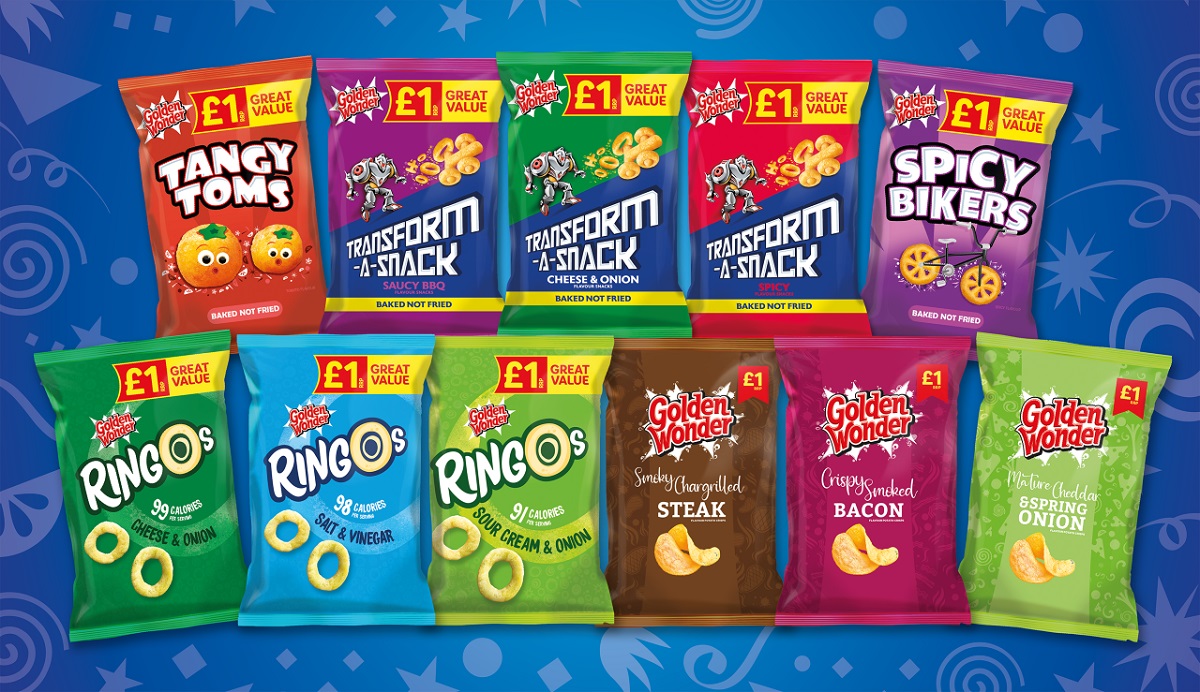 Armagh-based crisps and snacks company Tayto Group’s brand Golden Wonder is sold at £1 price-point.
Armagh-based crisps and snacks company Tayto Group’s brand Golden Wonder is sold at £1 price-point.
Inflation pressure is forcing many other brands to move above the £1 price-point, but Golden Wonder is committed to putting consumers and retailers first. The company claims that the brand is growing more than twice as fast as the market.
According to Tayto Group, this commitment to £1 has been instrumental in Golden Wonder’s success with its £1 PMP Snacks range outperforming the market (+22.6 per cent vs +9.9 per cent) and Transform-A-Snack being the star performer (+42 per cent).
“Having surveyed both retailers and consumers, it was clear how important the £1 price-point is to both,” shares Smith of Tayto Group. “In the current climate, consumers are feeling the pinch and independent retailers need to showcase great value for money. Instead of raising the headline price of our £1 PMPs, we’ve decided to stick to £1. Our new range has recently rolled out and demonstrates Golden Wonder’s commitment to delivering great consumer value whilst offering strong retailer margins.”
Whilst £1 PMPs have been the powerhouse of bagged snacks in recent years, independent retailers must also stock a strong range of impulse snacks to capture the resurgent FTG opportunity post-Covid.
Squeezed pockets also mean people are making fewer trips to the pub, but this creates an opportunity for independent retailers.
“During lockdowns, sales of pork scratchings in convenience soared as more people enjoyed the ultimate pub snack at home rather than in the pub,” informs Smith. “With over 20 per cent of pork snackers unwilling to switch to another snack, the 42 per cent of stores not stocking pork snacks are collectively missing out on £6.2 million a year. Tayto Group, the No. 1 pork snacks manufacturer, with almost 70 per cent share and the two leading brands – Mr Porky and Midland Snacks – can help retailers maximise this opportunity.”
Keeping cool
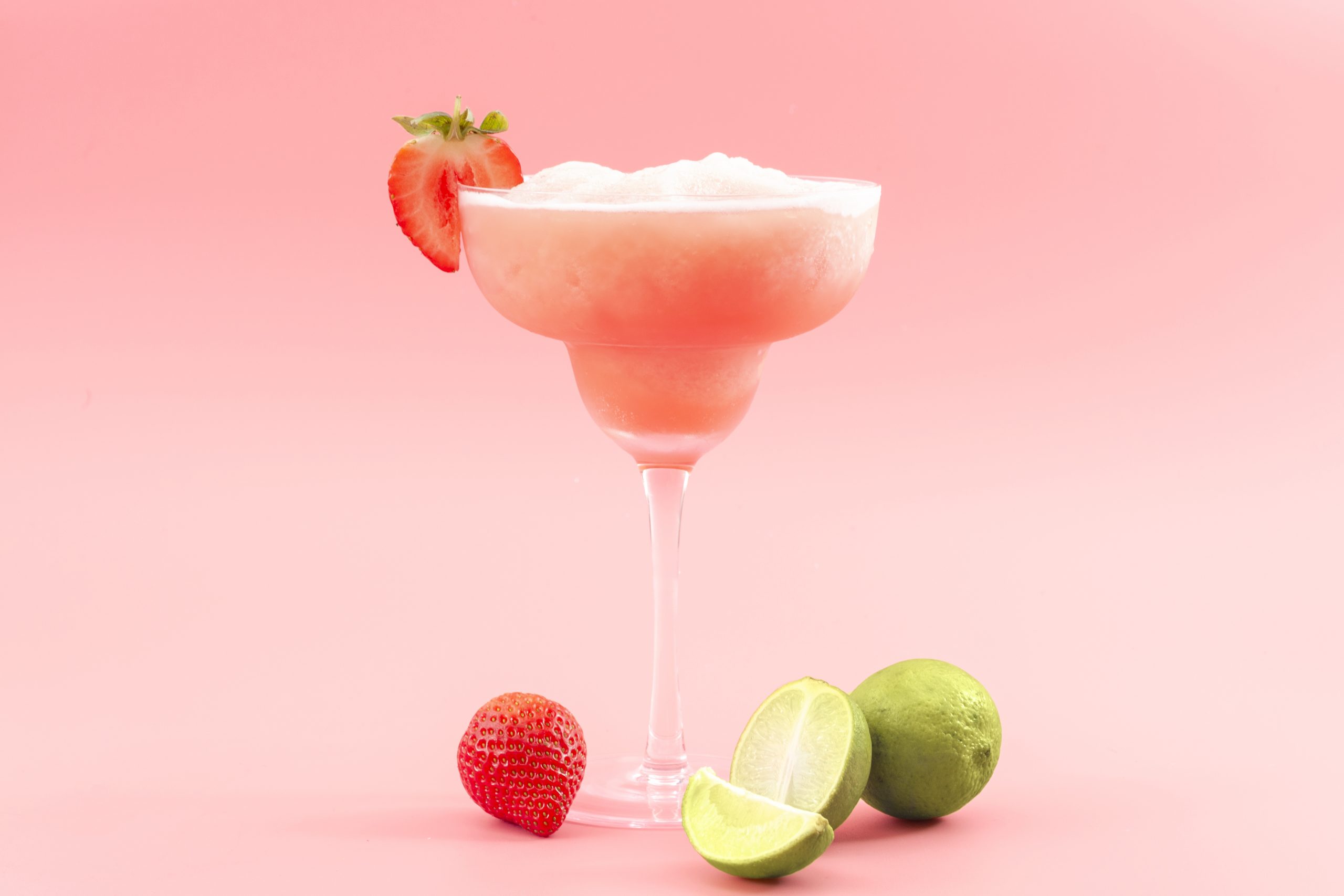
Desserts form an essential FTG element, and Rose marketing UK, a manufacturer and distributor of confectionery, freeze pops and savoury snacks, has a number of in-house brands including Eezy Freezzy, Goody-licious, Giant Candy Company, The Candy Castle Crew, State of Choc and Mega Candy Company
“Nearly two million candy floss tubs were sold in 2022, so the product should be a natural addition to the merchandised range,” says Watt of Rose Marketing UK Ltd. “Must-stocks include the likes of the best-selling Vimto Candy Floss 30g and a new SLUSH PUPPiE Candy Floss 30g, which will be launching in the coming months.”
Another popular is the range new Eezy Freezzy Mocktail Slush Pouches and Eezy Freezzy Mocktail ice pops. The new Mocktail Slush Pouches come in two of the most popular cocktails flavours – Hugs on the Beach and Mojito.
The 250ml mocktail Slush Pouches contain natural colours and suitable for vegan, vegetarian and gluten free diets, informs Watt. “They are displayed in a single flavour box of 12 and sold separately with an RSP of £1.39.”
“The Eezy Freezzy Mocktail ice pops comprise a mixed pack of Pina Colada, Mojito and Hugs on the Beach. The 50ml mocktail ice pops contain real fruit juice and are suitable for vegan, vegetarian and gluten free diets. They have an RSP of £1.50 per box of 10 mixed flavour pops per pack.”
Healthy refreshment

No FTG meal is complete without liquid refreshment, and with the healthy trend continuing, energy and functional drinks make up an ever more attractive component for the consumer on the go.
Boost Drinks offers products in three functional drinks categories – Energy Stimulation, Sports Drinks and RTD Iced Coffee. Within this, Boost is the third largest brand in the Energy Stimulation category and the number one fastest growing Sports and RTD Iced Coffee brand.
Boost Original Energy is available in 1 litre, 500 ml and 250 ml packs and is rated 1st for taste among Original competitor products. The range of flavour profiles and pack sizes on offer from Boost allows consumers to rely it as a brand that caters to an array of consumption moments, whether on the move or stocking up to enjoy at home.
“Whilst we are dedicated to developing a range which appeals to consumers, we are also committed to being a transparent and collaborative partner to wholesalers and retailers, a core belief that inspired the Honest Broker approach that Boost is founded on – a belief that in order to help retailers achieve the best sales, open, honest and collaborative interactions are essential,” adds Adrian Hipkiss, marketing director at Boost Drinks
Flavours in Energy accounts for 38 per cent of stimulation sales and have shown a huge 48 per cent growth YoY showing that there’s a significant thirst for a range of flavour variants. “Boost Red Berry is the largest selling 250ml stimulation flavour SKU. However, considering the fact that 39 per cent of stimulation shoppers actually make their purchase based on flavour alone, it’s important to stock a wide variety of flavours to cater to those customers,” adds Hipkiss.
In March, Boost launched its reformulated 250ml Lemon & Lime Energy (previously Citrus Zing), an energizing blend of citrus fruits for shoppers who are looking for a “fresher” taste experience. Meanwhile, the sales of original flavour drinks continue to perform extremely well with +17 per cent growth, the company claimed.
At present, the sales of 500ml cans are booming with +16 per cent growth YoY (worth £503mn) and 18 per cent growth in the category from flavoured 500ml variants alone, resulting in the segment currently being the fastest growing category in Energy Drinks.
The ongoing growth trend and consumer appetite present a promising opportunity for Boost Drinks to penetrate the 500ml market with a range such as Juic’d at an impactful, and affordable price point.
As consumers are increasingly turning to Sports Drinks that deliver on quality whilst not compromising on cost, it is important for retailers to take into consideration consumer behavior and the two main drivers behind purchase for Sports Drinks – taste and value.
Drinks galore

Now worth £230 million, the RTD Iced Coffee category is growing rapidly, with symbols and independents sales having now grown to over £44 million. Caramel (+36 per cent), Mocha (18.4 per cent), Espresso (+16 per cent) and Latte (+14 per cent), all of which feature in Boost’s offering, are the top four flavours in the space and account for 84 per cent of the category’s sales value.
Iced beverages also continue to be a popular option for consumers as an afternoon pick me up or a convenient beverage that travels well when on the go. “We know that the RTD Iced Coffee category is growing rapidly at +24 per cent volume and +31 per cent value YoY, providing a huge opportunity for retailers to draw customers in and maximise sales,” informs Hipkiss. “To successfully capitalise on this trend, retailers should provide enough space to allow for future growth in the category and stock fast growing brands such as Boost.”
From February 2021, under a deal signed with Dorset-based brewery Hall & Woodhouse, Boost Drinks became responsible for the distribution, marketing and sale of soft drink brand Rio.
With its blend of five fruit flavours and sources of vitamin C, Rio is a top five ranked SKU in fruit carbonates based on unit rate of sale and is the fastest growing carbonate brand +29 per cent YoY.
Rio, which contains exotic guava and passion fruit, is the fastest growing brand in value, witnessing a 34 per cent growth YoY and has the highest unit ROS amongst all fruit carbonates.
Insight illustrates that flavoured carbonates is the third largest category in Soft Drinks, now being worth over £291 million and growing +eight per cent YoY. Tropical fruit is the fasted growing flavour in the category, growing +50 per cent and adding +£3 million RSV in two years.
This shift in consumer appetite is only set to grow, so it’s vital for retailers to take this into account with a range that meets consumer demands.
Shake Baby Shake

Global Brands’ canned cocktail brand Shake Baby Shake recently introduced Piña Colada to their core range to offer consumers more choice of familiar cocktail flavours – perfect for evening FTG occasions.
According to a 2023 Cocktail Trends report, Piña Colada is one of the most sought-after cocktail served globally, and the launch now means Shake Baby Shake offers a product for each of the four top selling cocktail flavours in the UK – Passion Fruit Martini, Strawberry Daiquiri, Raspberry Mojito, and Piña Colada.
“In the UK, total RTD impulse value is currently £168.1 million, and growing +6.1 per cent year on year, as shoppers purchase more canned cocktails and traditional RTDs, treating themselves for a night in,” adds Charlie Leaver, head of brand at Global Brands
Across the board, 70cls and the VK Mixed Pack formats are becoming more popular as sharing occasions grow. Last summer, the rate of sale for sharing packs increased by 15.7 per cent year on year, and this is likely to increase further in 2023.
“Chilled single cans perform very well in convenience, as they are a cooled, convenient format, and easy to consume within an hour of purchase. These include Pink Hooch, Hooch Lemon, and Shake Baby Shake’s range of cocktail cans, including the newly released Piña Colada flavour,” adds Leaver of Global Brands.
Independents can cater to both the sharing occasion and demand for impulse purchases by stocking ambient large pack formats, alongside a chilled range of single cans.
“A staple of the RTD category, Hooch sales increase by 41 per cent when the sun is shining – and summer is the perfect time for retailers to stock refreshing, fruity beverages,” says Leaver. “The range has exciting NPD from the past couple of years, including Pink Hooch and Orange Hooch, which provide a new take on a nostalgic beverage, appealing to the wide demographic of consumers purchasing beverages for an at-home sharing occasion.”
Sugar-free bevs to go

British soft drinks maker Britvic Plc’s Tango has a history of success with sugar free launches, which has been a key driver of its +48 per cent growth vs LY making it now worth £77 million and cementing itself as the third largest flavoured fruit carbonates range.
Tango Dark Berry Sugar Free, which was launched in April 2021, is the number one fruit flavoured carbonate during that year, it is now worth £13 million RSV, growing +66 per cent vs last year.
“The success of sugar-free flavours reinforces how important it is for us to continue meeting the demands of health-conscious consumers with an innovation pipeline while keeping flavour at the forefront,” says Parker of Britvic. “Both Tango Dark Berry and Tango Apple sugar free products are available in a range of formats, allowing convenience stores a number of options to meet new consumer demands, including six-can multipacks and 2l bottles, perfect for sharing with family and friends.
Similarly, “Cola flavours are also driving growth, with 56 per cent of Pepsi MAX’s penetration coming exclusively from flavours. This shows consumers have an appetite for new and interesting flavours within the cola category,” Parker adds.

UK consumers are increasingly looking to adopt healthier diets, with 58 per cent open to changing their eating habits. That’s why Coca Cola has identified Healthier Choices as one of the key drivers to unlock growth within the soft drinks category in Refresh Tomorrow category vision.
Furthermore, the recently introduced regulations for displaying HFSS products in retail have added extra emphasis on the importance of low and no sugar options for FTG
“Enjoy with Food and Enjoy Socialising are two of the key growth drivers of our Refresh Tomorrow soft drinks category vision – which identifies an opportunity for further soft drinks sales growth over the next three years,” says Amy Burgess, senior trade communications manager at Coca-Cola Europacific Partners (CCEP). “These took off at the height of the coronavirus pandemic, but with the rising cost of living, they’re likely to continue as some people reduce spend on luxuries like going out to eat and drink.”
“Retailers should ensure that they are well stocked with sharing packs of popular soft drinks to cater to these social occasions,” suggests Burgess. “That includes Coca-Cola, which continues to drive growth in grocery and convenience, led by Coca-Coca zero sugar, Fanta, the number one flavoured carbonates brand in GB; and Schweppes, worth £103.5 million in retail and the largest mixer brand in convenience.”
Soft drinks are far ahead of other HFSS-impacted categories when it comes to sugar reduction. “73 per cent of the category’s value sales already came from HFSS-compliant products before the regulations were introduced – significantly more than other impacted categories,” informs Burgess. “That means there is a big opportunity to upweight low and no sugar variants of soft drinks as they can be displayed at the front of store, near the till point and on aisle ends of larger format stores.”
Since 2015, through reformulation, Coca Cola reduced sugar across the CCEP portfolio by more than 25 and have introduced low and zero (non-HFSS impacted) variants from nearly all our brands.
“As a result, 86 per cent all our soft drink brand ranges are non-HFSS,” adds Burgess. “This includes Coca-Cola zero sugar, which is driving growth in the Coca-Cola range, and our zero sugar flavoured carbonates, which are worth more than £138 million and in double digit growth, highlighting the popularity of products like Fanta Zero, Sprite Zero and Dr Pepper Zero amongst consumers.

Meanwhile, Coca Cola brand Schweppes offers a range of options for all tastes and occasions, including the renowned Schweppes Tonic Water and Schweppes Slimline Tonic.
The implementation of both the sugar tax and HFSS restrictions has led to key players in the soft drinks category driving product innovation, to ensure strong sales in an ever-changing retail landscape. In tune with the trend, Starbucks Corporation reformulated its range to be HFSS compliant and launched its new format, Daily Brew, in late 2022.
“As shoppers are continuously seeking products that provide great value for money, yet still wanting to indulge, the RTD Coffee sub-category is continuing to grow at a rate of +35.4 per cent MAT, making it worth £209 million,” says Adam Hacking, head of beverages at Arla (licensing partner of Starbucks in UK). “Brand loyalty remains strong despite tightening purse strings, with shoppers dialling up their cost saving by seeking Coffee House quality products in the chilled grocery aisles.”
The range, consisting of three variants, has been specially developed to provide consumers with a deliciously straightforward coffee taste that can be enjoyed whatever the routine. It contains 30 per cent less sugar than most chilled ready-to-drink coffees, while keeping the Starbucks taste.
“As the category leader and representing close to 50 per cent of all RTD coffee sales, Starbucks chilled coffee has played a fundamental role in spearheading total category growth, adding more than £13 million in incremental sales,” adds Hacking of Arla. “Now worth £122 million, Starbucks is one of the wider soft drinks category’s most successful brands. This means that not only has it earned its place in all soft drinks’ fixtures, but also that consumers expect to see it.”
Merchandising rightly
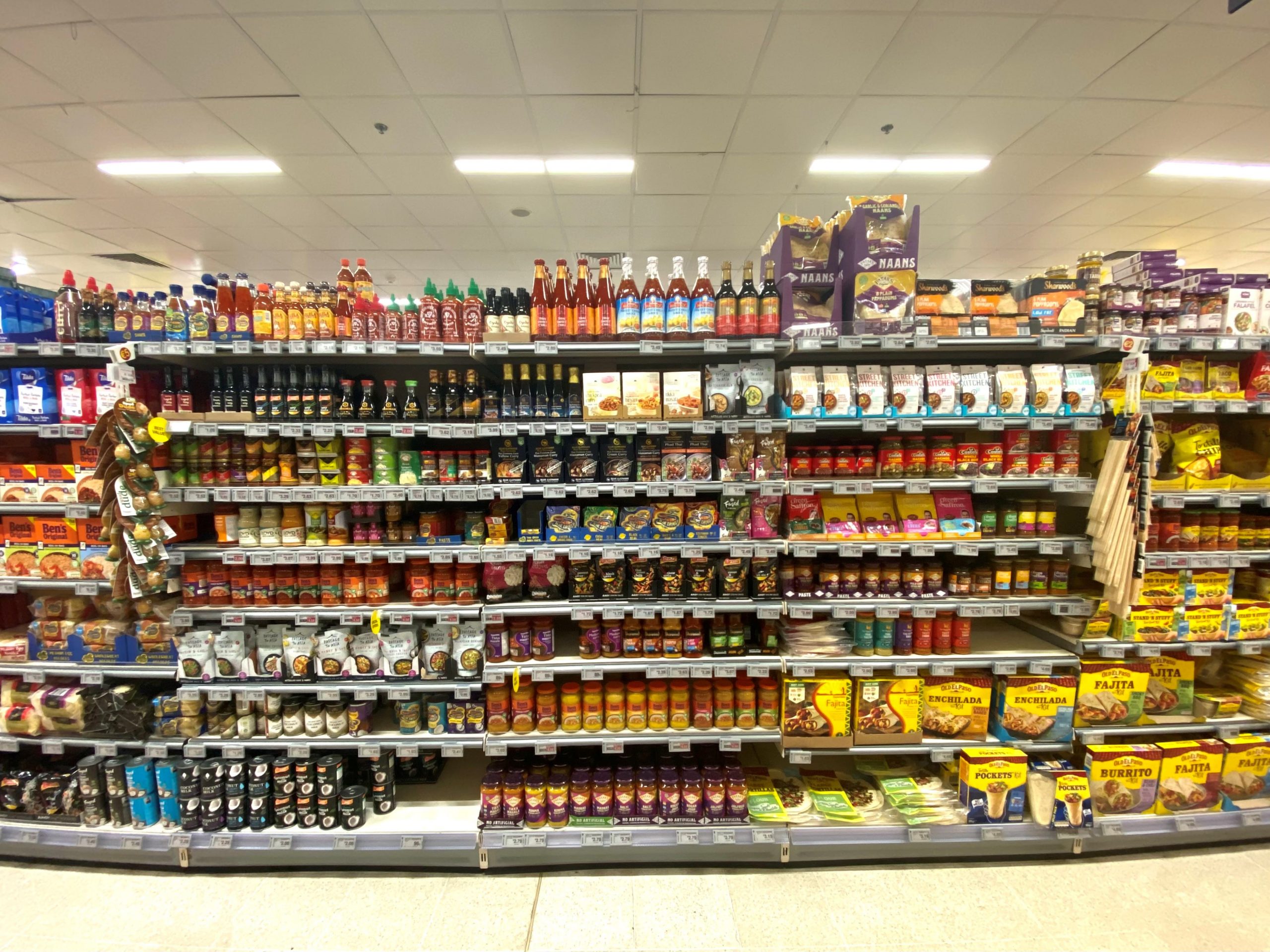
Customers who are interested in grab-and-go make impulse purchases. If the shoppers see something that falls into their criteria, they will often choose it without thinking twice. So, first and foremostly, the grab-and-go products must be displayed in plain view, the food must be easy to carry, and always remember food safety is more important today than ever before.
Retail stores need to think carefully about how to present your retail story. “Many people purchase grab-and-go food because they want to eat it on the go,” shares Shalu Nair, a shopper at a convenience store in Leeds. “If it requires multiple hands and utensils to eat, they will probably pass on that item. Even though the food should be easy for people to stop and grab, it still must be adequately protected. That means having extra barriers between shoppers and the food items is essential. It makes it easy for shoppers to view the food from the front and the side, maximizing the visual appeal and encouraging engagement. That way, grocery store owners can get the most out of their investments.”
Global Brands data highlights that effective merchandising can lead to an increase in consumer spend per head by nine per cent. Examples of effective merchandising include shelf wobblers, talkers and bold aisle fins, which capture consumer attention and motivate purchase. Convenience retailers investing in these methods of instore advertising will help to drive impulse purchase within the category.
“Use secondary sightings and create an eye-catching display with the key on-the-go products people will be on the lookout for,” adds Knop of Premier Foods. “To attract those in a rush, create point-of-sale displays so that consumers won’t miss convenient options which are available at the store.”
Similarly, many customers look for convenience foods with a greater emphasis on fresh and healthy ingredients. The shoppers must be able to quickly identify ingredients and nutrition facts printed on the label. Market studies have proven that consumers of grab-and-go items tend to be “label readers.”
“Before making the purchase decision, most shoppers read about the ingredients, nutritional information, prep instructions, etc,” adds Asif Khan, a software engineer working in London. “Today’s customers want to know what they are eating or drinking, where it came from, when was it bottled, and what allergens may be present. Providing easy-to-read, labels on grab-and-go items enhances the customer experience, and it will augment retail sales. Retail stores that offer consumers more variety and quality, along with accurate ingredient information, will increase customer loyalty and grow their businesses.”
Enhancing the in-store experience by meeting the evolving needs of shoppers is vital for continued growth and success of retailers. Investing in state-of-the-art technology will help retailers continue to grow by delivering a positive and informative shopping experience for consumers.
According to Lumina Intelligence, sustainability is becoming an increasingly important factor in consumers’ choices, with 66 per cent of consumers being very sustainably conscious.
“Our latest Food to Go Market Report highlights the ongoing importance of value, sustainability and innovation in this fast-paced sector,” informs Katherine Prowse, senior insights manager of Lumina Intelligence.
“As inflation continues to impact consumers’ discretionary spending power, operators that are able to provide value for money, while remaining sustainable and innovative, are likely to succeed in this competitive market.”
The changing times demand a renewed focus on value, which will place independents in a strong position to push sales. However, the market will become fiercely competitive in terms of price point, range and execution of meals. To capitalise on the opportunity, retailers must utilise customer data to create tailored offers that are relevant and savings-focused.
“Inflation is already affecting many consumers but until now food-to-go has continued to perform strongly,” adds Nicola Knight, senior analyst at Institute of Grocery Distribution. “So, while inflation will boost the overall value of the market, volume will, at best, stay the same in 2023. Key opportunities for retailers include strengthening their meal deal offers as consumers become more value-led, and utilising customer data to create tailored offers that are relevant and savings-focused. There’s also an opportunity for them to increase food-to-go ranges to meet consumer needs across a wider variety of meal occasions.”
Changing lifestyles and an ever-increasing desire for convenience and choice have all played a significant role in the way people consume food. These changes mean that more than ever before consumers are looking to the grab-and-go category as a solution to their meal and drinks needs.
Over the next five years, the FTG market is set to reach a value of £21.2 billion and is growing at double the rate of other food channels, providing a huge opportunity for outlets looking to expand their offering. Ensuring you have grab-and-go options that fit into customers’ hectic lives will help grow overall category sales.
So don’t miss out!







 To use this website you must be aged 18 years or over. Please verify your age before entering the site.
To use this website you must be aged 18 years or over. Please verify your age before entering the site.
